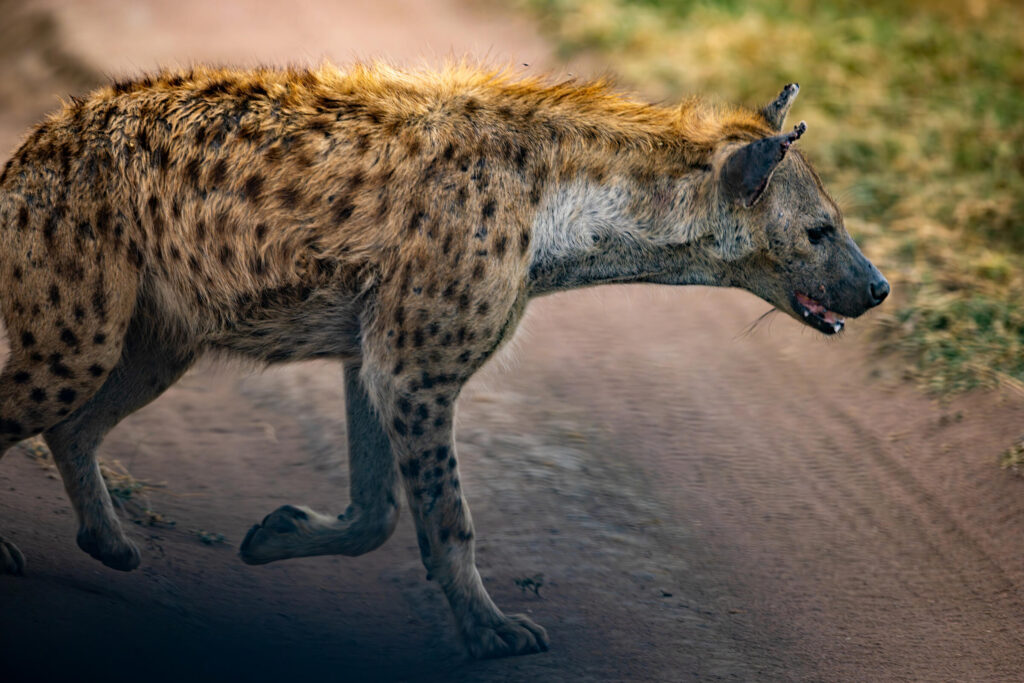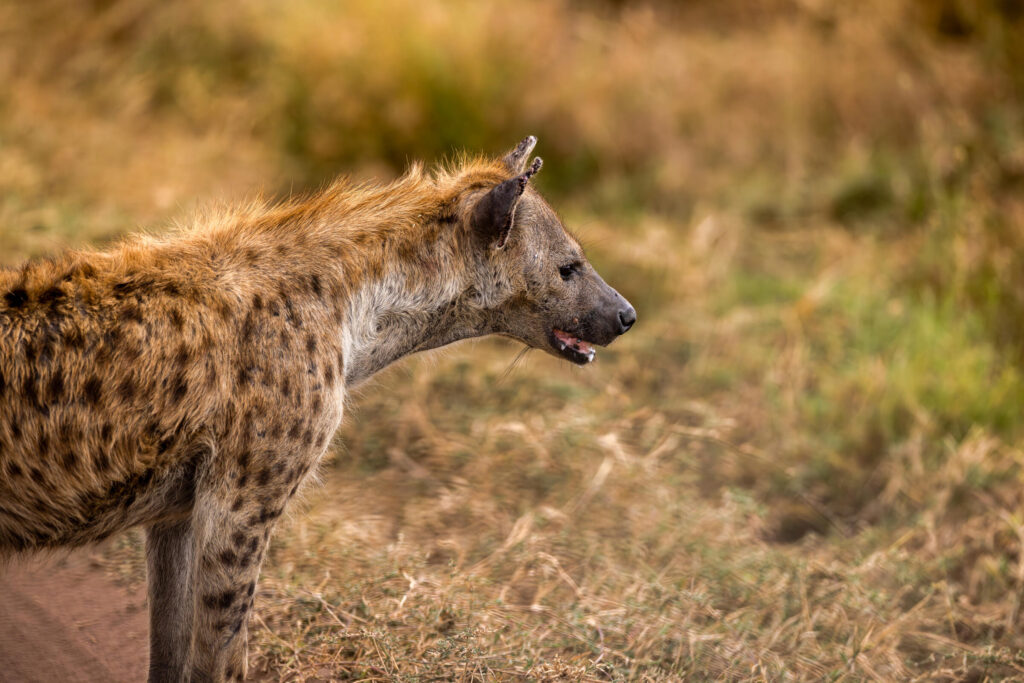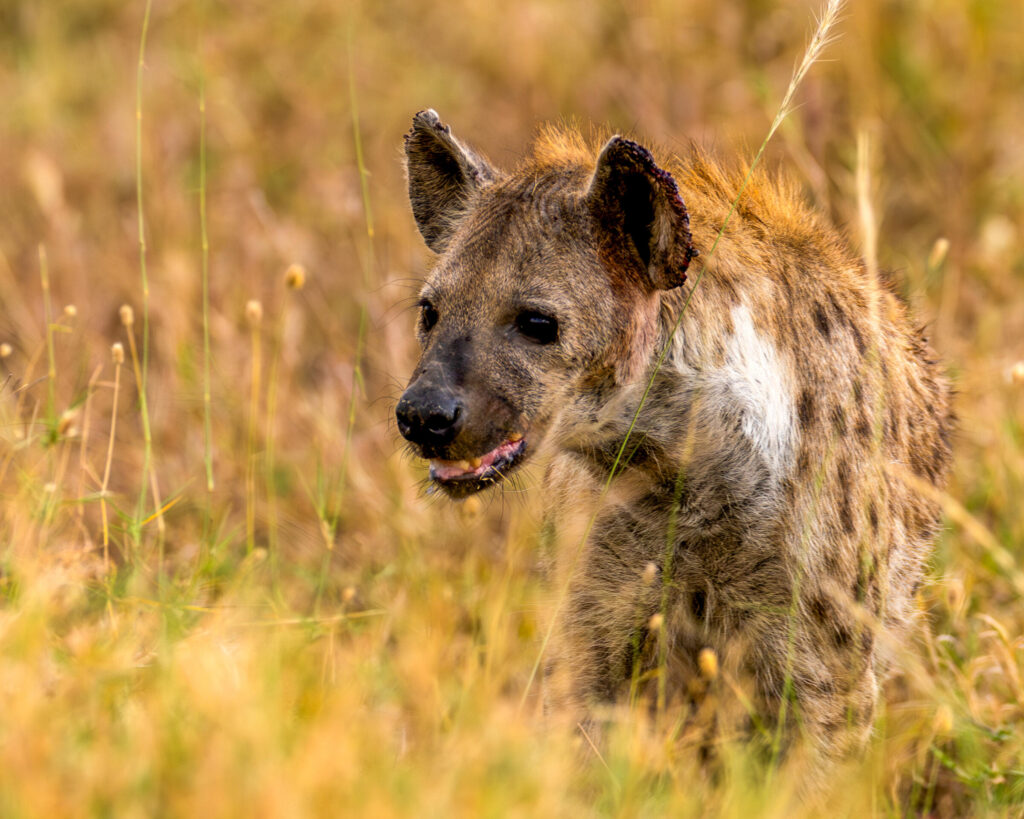On our first day in the Serengeti we had stunning visits with the three big cats, starting with this 2 headed cheetah!

On our way to the park, we stopped by the Ngorongoro Crater for a short hike, with a different guide, giving us an amazing perspective of this enormous crater. The weather was foggy but occasionally cleared to give us a good view of the terrain. Along the way we saw beautiful wildflowers and trees and a type of army ant called driver ants. If you’re interested, here is a very interesting article about them: https://en.wikipedia.org/wiki/Dorylus)
Our guide carried a gun to frighten away any dangerous wildlife but there were no large animals up close this time. It did feel odd to be walking along with someone carrying what looked like an AK47 rifle.


As you will see in a later post, we spent our final day of the guided safari driving inside this 125 square mile crater. Bare as it looked from above, it was teeming with life of all sorts!
My favorite shot of the morning was of this Purple Grenadier Finch which I now recognized, having seen the pair at Lake Manyara the day before.

Here’s a sample of the flora along the path.






The driver ants crossing our path in layers 3 or 4 deep looked just as they do in the wikipedia pictures.


There is a tremendous amount of water in the crater supporting a wide variety of wildlife year round. For a sense of perspective, the tiny dots you see in the second picture are buffalo! Giraffes are the only large animals that don’t come into the crater. The terrain on the way into and out of the crater is too difficult for them and the trees they eat don’t grow well in the crater’s soil.


As we turned away from the crater and walked back to the road, we passed through Masai lands. You can see a Masai village and a herd of their cattle and also a giraffe or two in the background. (Imagine having giraffes in your backyard!) One young lad wanted his picture taken, for a small tip.








At one of the gates into the Serengeti we passed this small baboon family. A closer look at the adult revealed a tiny baby deep in her lap.


When we arrived at the Serengeti, the wait to get in was so long that we stopped to have our lunch first. That is, I ran around taking bird pictures while Adam and Jackie ate, and then I gobbled a bit of food before we had to move on. Here are the Superb Starling, the African Bulbul and a new starling – the Hildebrandt’s Starling with yellow eyes instead of white and no white feathers.







African Buffalo are somewhat smaller than American bison and their fur is less thick. The horns are also quite different, longer than their American counterparts. In fact, although they are in the same family, they are not actually closely related.

The beautiful cheetahs are now endangered. The reasons are multifaceted. If you’re interested, here is an excellent article about what contributes to this and what can be done to save the species: https://www.overandaboveafrica.com/cheetahs?gad_source=1&gclid=CjwKCAjwyfe4BhAWEiwAkIL8sFYXTlq6tMzh7dCPQW3qARVZOtqk1379_AVIWfzIgwtTWVhmS35dfhoCk1oQAvD_BwE
When our guide heard that there were 3 males traveling together, he took us on a detour from our planned drive in order to see them. The males travel together after mating season is over, leaving the females and the cubs to fend for themselves, which is certainly part of the problem. (More on that later in the week.)





More big cats! Our second leopard sighting was of this sleeping mother, up against an outcropping of rocks. I was sure I saw a cub with her so we waited and watched while nothing happened until, after 20 minutes, it finally brought its head up – just once. The first picture was the original, uncropped, through the 400mm lens. The last 2 are crops, both of the one time the baby looked up.



Eventually – thrill of the moment! – the mother turned over but still never opened her eyes. (When her leg came up, I had the strange sensation of looking at a child sleeping in her leopard PJ’s!)











Lions in the tall grass: resting, on the move, coming close…



…and coming closer still – and finally – too close to focus!


Gazelles were around every corner, mostly the Thomson’s Gazelles (with the side stripe, in the last shot) but on this first visit with a herd of them, they were mostly Grant. (The first 2)



We also saw a new (for us) antelope type – the very elegant, tritone colored Topi.



On our first encounter with a hyena, we were again almost too close to get a shot, at least to get the whole animal in the viewfinder.



More giraffes on day 3 – always a great pleasure to encounter.






The giraffes are cool enough in their own right but check out the Red-billed Oxpeckers eating the insects off of them.




The Kori Bustard is the largest flying bird native to Africa. Unfortunately we didn’t see one actually fly but we ran across them several times, starting with these two on our first day in the Serengeti. The last picture is of a White-bellied Bustard, a smaller and sleeker bird.




I had tried to see the Great White Pelicans in Colorado, without success, so I was thrilled to see these wonderful birds this time. We saw them again in the Ngorongoro Crater on day 7.

We couldn’t proceed down the road with this female Ostrich stubbornly sitting there so I took some pictures of her pal in the grass.



Lastly, a few other birds of that day: the Tawny Eagle, Blacksmith Lapwing, and an engaging pair of White-capped Shrikes.







w3goyr